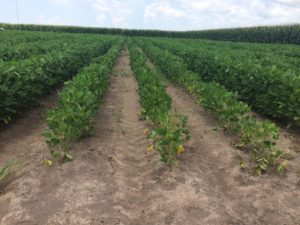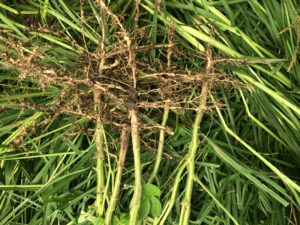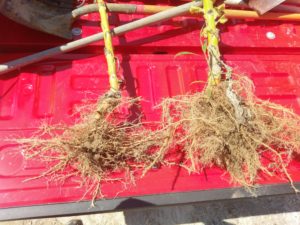Impact of Guava Root Knot Nematode quarantine on Tobacco and field crops in N.C.
go.ncsu.edu/readext?557138
en Español / em Português
El inglés es el idioma de control de esta página. En la medida en que haya algún conflicto entre la traducción al inglés y la traducción, el inglés prevalece.
Al hacer clic en el enlace de traducción se activa un servicio de traducción gratuito para convertir la página al español. Al igual que con cualquier traducción por Internet, la conversión no es sensible al contexto y puede que no traduzca el texto en su significado original. NC State Extension no garantiza la exactitud del texto traducido. Por favor, tenga en cuenta que algunas aplicaciones y/o servicios pueden no funcionar como se espera cuando se traducen.
Português
Inglês é o idioma de controle desta página. Na medida que haja algum conflito entre o texto original em Inglês e a tradução, o Inglês prevalece.
Ao clicar no link de tradução, um serviço gratuito de tradução será ativado para converter a página para o Português. Como em qualquer tradução pela internet, a conversão não é sensivel ao contexto e pode não ocorrer a tradução para o significado orginal. O serviço de Extensão da Carolina do Norte (NC State Extension) não garante a exatidão do texto traduzido. Por favor, observe que algumas funções ou serviços podem não funcionar como esperado após a tradução.
English
English is the controlling language of this page. To the extent there is any conflict between the English text and the translation, English controls.
Clicking on the translation link activates a free translation service to convert the page to Spanish. As with any Internet translation, the conversion is not context-sensitive and may not translate the text to its original meaning. NC State Extension does not guarantee the accuracy of the translated text. Please note that some applications and/or services may not function as expected when translated.
Collapse ▲Meloidogyne enterolobii Internal Quarantine from NCDA
On Friday, October 5, 2018, the N.C. Department of Agriculture and Consumer Services released a press statement outlining a quarantine for the guava root knot nematode (Meloidogyne enterolobii). After reaching out for clarification, NCDA&CS indicated that, as of right now, this current quarantine will largely only affect sweetpotato seed potatoes and slips and will not include ornamental sweetpotato from greenhouse production. The language of the decree allows for NCDA&CS to expand the quarantine for other potential sources of this nematode should they deem it necessary. For field crops and tobacco, this will be of minimal consquence; however, many of the tobacco and field crops are rotated with sweetpotato. Because the guava root knot nematode is aggresive, managing the guava root knot nematode within the state will be incredibly important to limit the spread to new counties to limit the impact on sweetpotato production. Expect more updates from the extension pathology team as the situation with quarantines for this nematode develops.
Guava Root Knot Nematode
The guava root knot nematode was found in North Carolina in 2011 on soybean and cotton. This nematode affects a number of NC crops, including tobacco, cotton, soybean, sweet potato, and other vegetable crops. This nematode is now confirmed in 8 counties (Figure 1). This nematode is more aggressive than other species of root knot nematode, but it is not possible to differentiate between root knot species on physical symptoms alone. Symptoms, similar to other root knot nematodes, include stunting and yellowing of aboveground portions of the plant (Figure 2) and root galls (Figure 3).

Figure 1. Guava root knot nematode distribution in North Carolina. Counties with NCDA&CS confirmed guava root knot nematode are highlighted in red.
Managing Root Knot Nematode in North Carolina
Identify fields with root knot nematode by sending samples to a nematode assay lab. Public and private labs are present in North Carolina and can provide counts of nematodes, identify the types of nematodes present (i.e., root knot, stunt, sting, lesion, etc.), and provide action thresholds for the quantity and type of nematodes present. Should a producer suspect that the guava root knot nematode is present, a molecular assay is needed to confirm and differentiate between species.
To limit the spread of nematodes to non-infested fields, sanitize shoes, vehicles, and equipment between fields. Nematodes are moved from field to field on plant root debris, soil on equipment, and soil/mud on shoes. Working within infested fields last when running implements should help limit the time needed to sanitize equipment and materials.
Fumigation is the most beneficial chemical treatment that is available for management of this nematode (Figure 4). In crops that fumigation is not an option, planting non-host crops with good weed management will be most effective. Peanut and corn are not good hosts for this nematode, and may be a good rotation where possible. Because many weeds in North Carolina are host to this nematode, weed management will help prevent an increase in nematode populations.
For More Information
Tobacco Root Knot Nematode Fact Sheet





